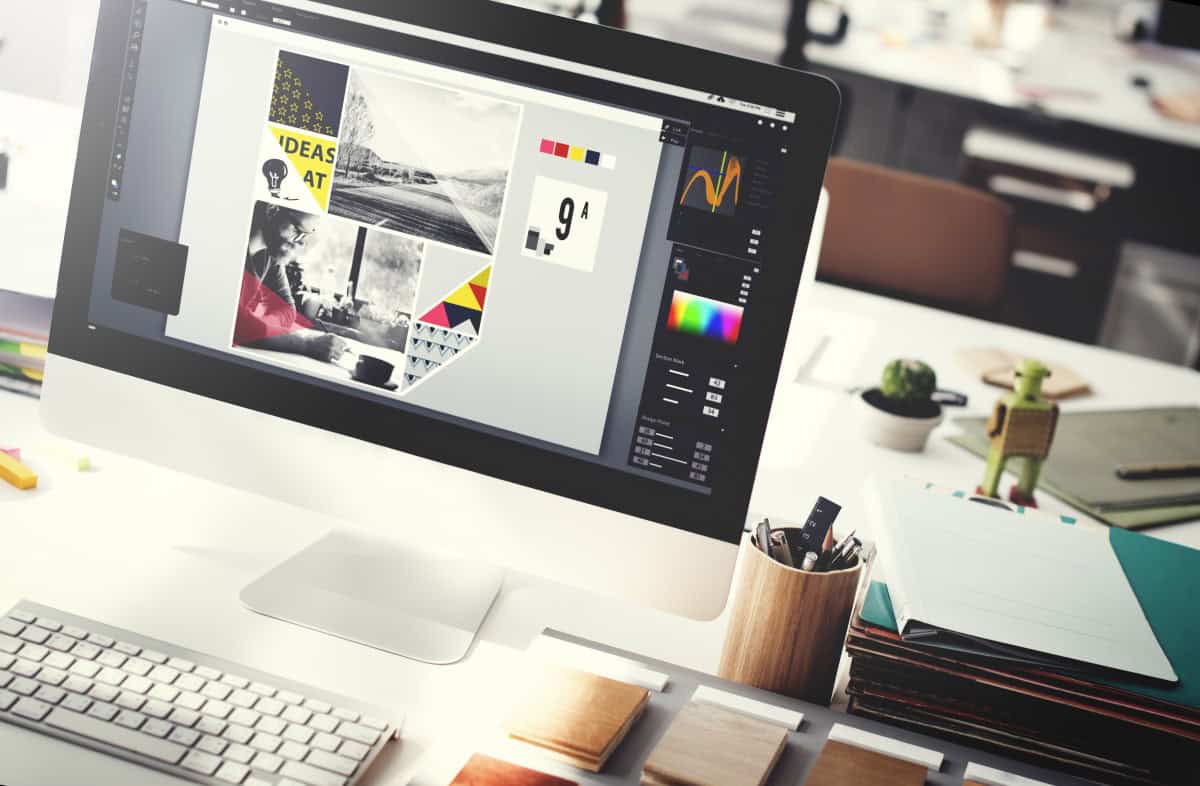While many in the creative industries have justifiable concerns around the proliferation of AI and fast-emerging technologies, others are happily adopting – and adapting to – the revolution. It’s a question of perspective. Do we see AI as a sinister interloper intent on taking over the workplace. Or are these new advances simply the latest tools in the long and ever-evolving creative landscape?
We asked the professionals at The Maverick Group for their opinions. And the results were overwhelmingly positive…
Today, we stand at the intersection of two powerful forces: artificial intelligence and marketing.
One is the most transformative technology of our time, distilling all of human knowledge captured in the world wide web. The other, behavioural marketing, is the heart of how businesses connect with people. Together, they are reshaping our own and our customers’ futures.
What is marketing at its core? It’s about understanding people, predicting their needs, and delivering value. And AI? It’s about data, learning, and making informed decisions faster than ever before. Combine the two, and you get a marketing engine that is not just efficient, but intelligent.
Marketing Innovation Through AI is transforming:
One of the most exciting areas is personalisation. AI can analyse huge amounts of data to deliver tailored content. So, when you browse online, you’re not just seeing ads, you’re seeing your preferences reflected. It feels natural, even human.
And that’s the magic of AI: Making technology feel more personal.
We cannot ignore the challenges. AI also raises questions – about privacy, ethics, and human oversight. Just because we can target a customer down to the finest detail, doesn’t always mean we should. The key is using AI responsibly – to enhance human creativity, not replace it.
The future of marketing is not about machines taking over; it’s about humans and machines working together. AI gives us the tools to be more strategic, more efficient, and more creative. AI is not the end of marketing as we know it. It’s the beginning of something smarter, faster, and more human than ever before.
So, we need to lead in this digital revolution, not resist. We need to show clients how they can maximise the impact and benefits of the technology – not leave that to sectors that have influence over our clients but not necessarily the expertise to truly understand how to apply it in relation to marketing and communications.

Technology is reshaping our creative studio faster than any of us would have imagined a decade ago. What was once a set of supporting tools has become central to how we work – from streamlined workflows and real-time remote collaboration to automated production and cloud-based platforms. The lines between departments are blurring, and traditional ways of working are giving way to something more flexible and responsive. But while the tools are evolving, the fundamentals haven’t changed: great ideas still need sharp Maverick Thinking, collaboration, and time to breathe.
Over the course of my career, I’ve seen huge shifts. I remember paste-up artists in the studio grumbling about the arrival of Apple Macs – convinced they’d kill creativity and put people out of work. For those who embraced the change, the opposite turned out to be true. I see the AI revolution in a similar light.
There’s a lot of noise about automation replacing creativity. In my view, it’s the other way round. Technology should clear the way for creatives to spend more time doing what really matters – thinking, questioning, crafting. The challenge for studios now is finding the right balance: using tech to remove friction, not to flatten the process. The studios that will thrive are the ones that put people at the centre and build smart, scalable systems around them.
AI is helping brands to stop shouting into the void – reshaping marketing by helping brands personalise content, target the right people, and respond faster, all at scale.
But it’s not magic. When misused, it can feel generic or intrusive. The real value comes when AI is used thoughtfully, making campaigns smarter and more human. Done well, it helps your audience feel seen. Done badly, it can make you appear uncaring, tone-deaf, or even rather unintelligent.
Every startup, agency, and marketer seems to be shouting about how they have “harnessed the power of AI” to revolutionise your brand. But behind the noise, there’s something genuinely interesting going on.
AI isn’t just a buzzword anymore. It’s turning up in real campaigns, doing real work. From writing your emails to deciding who sees your next video ad. It’s becoming the quiet partner behind the scenes – working 24/7, never sleeping, never needing a coffee break.
With predictive analytics and machine learning, AI is figuring out what people actually care about… and when they care about it. It’s why that ad for hiking boots shows up just after you Google tramping tracks near you (creepy or convenient? You decide).
It’s also creating stuff – content. AI is drafting blog posts, building banner ads, even editing videos. It’s helping marketers produce more personalised, more targeted material, faster than ever.
AI increasingly gives clients the ability to do much of the work that they have traditionally devolved to agencies – faster and far more cost-effectively. From research and insight to design and production, technology fundamentally asks hard questions about the value that agencies bring to a client.
Technology is relocating the source of brand power. Brands are rapidly losing the ability to control their narrative. Battles will continue to be fought in the media universe, but wars will increasingly be won by building their power base in the one place where it can be managed and sustained. Among their employees and stakeholders. They will hold the power of the brand in their hands and the successful brands will be the ones that help them use that power.
Could this mean the death of the global consumer brand? As cultural conversations increasingly move away from globalisation and national issues take centre stage in both politics and economics, it is highly possible we will never see a new truly global brand emerge to dominate its sector in the next decade. In fact, even within national markets we are more likely to see the emergence of ‘tribal brands’ that succeed because they are built to appeal to a clearly defined audience segment based on shared cultural values. And the real success stories will be the brands whose employees and internal culture share the same values as their customers.

By using AI generated personas that reflect real target audiences, users can generate rich qualitative and quantitative feedback in hours rather than weeks, at a fraction of the cost of traditional qual and quant research.
Early head‑to‑head comparisons show that synthetic personas deliver remarkably similar findings to live respondents, demonstrating robustness even before an industry accepted standard for accuracy exists. Multiple advantages are unlocked with the synthetic approach:
The greatest upside may lie in B2B marketing, where recruiting niche decision makers has always been slow and expensive because the target audience is hard to engage. Synthetic research offers virtually infinite access to hard‑to‑reach professionals, enabling larger samples, deeper segmentation, and yielding more robust results without the recruitment bottleneck.
As AI models continue to improve, brands that adopt synthetic research could be making faster, smarter decisions grounded in actionable insight. Synthetic research could be the next essential tool for any team that needs reliable customer intelligence at scale.
Essentially, gone are the days when Public Relations were simply concerned with landing proactive coverage for an organisation. That’s because in today’s world, so much business is now conducted online. This means that the risk of cyber hacks, security breaches and ransomware infiltration is becoming an increasing threat. Quite simply, more and more businesses are being attacked- and bad actors are harnessing the technology for financial gain.
It’s important that businesses get ahead of the challenge – and Include this as part of internal and external annual comms plans
PR professionals need to read up and equip themselves on the risks inherent in this new climate. Your clients will turn to you for advice. They will expect you to know how to respond – and this is how you make yourself indispensable.
So, be proactive. Don’t wait for something to happen. Have a plan already formulated, created and approved so you can jump into action the moment a hack or breach hits the organisation.
That means deciding what colleagues, customers and the media need to know. Having all this in place is the best way to address corporate technology takedowns and to avoid falling back onto a ‘no comment’ response. And remember, the challenges are constantly evolving, so review your PR contingencies regularly. This is not a one-off exercise.
One of the key areas influencing the translation industry is in highlighting and addressing ecological issues within workflows. We are seeing this play out in a number of ways with regard to reducing energy and with a focus on digital-first practices. In recent years we have shifted from printed translations to digital deliverables, encouraging much greater remote collaboration so that providers such as interpreters are required to travel less.
With Eco-Labelling and Reporting, some forward-thinking companies are also starting to track and report their translation supply chain’s carbon footprint. This is because future RFPs are likely to include sustainability compliance for translation vendors. And by providing more eco-conscious transcreation services we are able to focus on the ethical use of AI such as avoiding exploitative data sourcing, ensuring access to low-resource languages and fair compensation for native speakers who help to train the AI models.
The advent of any new technology will inevitably create change. From the spinning jenny to the steam engine to the micro-chip, every advance moves the human race in a new direction. Some see progress as a challenge. Other see it as an opportunity. But the creative world is, by definition, a tribe of early adopters. And at The Maverick Group, we’re very much part of that tribe! We test. We explore. We find new ways to do new things. We believe in making our client’s lives – and businesses – better. And if new technology can help us to do that faster, more efficiently, more successfully – then we’re all in.